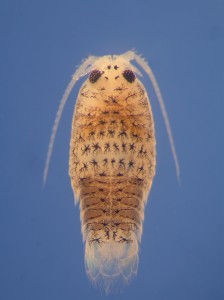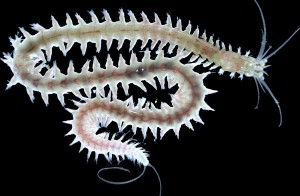
Whether we are aware of it or not, our lives are intricately associated with specific, precise rhythms of nature. Most prominently, our phases of activity and rest correlate with the day/night cycle (with college students seemingly the exception to this rule), and even the female menstrual cycle operates on a strict, monthly interval. These rhythms are regulated by a complex network of molecular interactions referred to as biological clocks. The most well-known and studied clock is the circadian clock, which operates over a period of about 24 hours. However, many non-circadian rhythms have been observed, such as lunar and tidal rhythms, particularly conspicuous in marine animals, which demonstrate the existence of non-circadian clocks and hint at the possibility of non-circadian molecular architectures. For instance, animals that live in shallow waters and reproduce by external fertilization possess a vital sense of changing tides that dictates when it is most optimal to spawn [1]. Nevertheless, despite extensive studies, it has long been unclear how different biological clocks are interconnected and whether or not they share a core set of molecular regulators.
Two recent independent studies from the UK and Austria took their observations from the field to the lab and demonstrated that the circadian clock is not the only biological clock found in nature. This provided evidence against the model where non-circadian rhythms are only specialized manifestations of circadian clocks. “Our work is the first to show definitively that tidal time is kept by a dedicated tidal oscillator separate from a circadian one housed in the same animal,” says Dr. David Wilcockson, an aquatic biologist at Aberystwyth University. Wilcockson and colleagues examined the speckled sea louse, Eurydice pulchra, using genetic manipulations via RNA interference to show functional independence of a circatidal clock [2]. Similarly, the other study analyzed the marine worm Platynereis dumerilii and demonstrated a circadian-independent circalunar clock [3]. “These investigations … perfectly demonstrate how the field of biological timing is leveraging laboratory data to investigate molecular timing questions in natural species,” says Dr. Josh Gendron, a biologist at Yale University who was not affiliated with the studies.

To complicate matters further, it was found that the circalunar clock in Platynereis could even interact with the circadian clock, influencing not only circadian locomotor activity but also gene expression. This finding “really opens the big question concerning the molecular mechanism underlying a monthly oscillator,” says Dr. Kristin Tessmar-Raible, a molecular biologist at the University of Vienna who led this study. Indeed, both studies highlight just how much there is left to uncover in the field of biological clocks.
Although marine organisms such as Eurydice and Platynereis may be the ideal model organisms for studying non-circadian clocks, it will be very interesting to see how closely the genetics of these systems will carry over to human beings. It is conceivable that these studies may help inform medical efforts to control the human female menstrual cycle, for example. Whatever their contribution, these studies are definitely a step in the right direction for the field of biological clocks. Dr. Tessmar-Raible adds, “I think our true main contribution is to bring the non-circadian clocks back into the limelight.”
Sources:
1) Tessmar-Raible et al. Another place, another timer: Marine species and the rhythms of life. BioEssays, 2011
2) Zhang et al. Dissociation of circadian and circatidal time-keeping in the marine crustacean Eurydice pulchra. Current Biology, 2013
3) Zantke et al. Circadian and circalunar clock interactions in a marine annelid. Cell Reports, 2013
